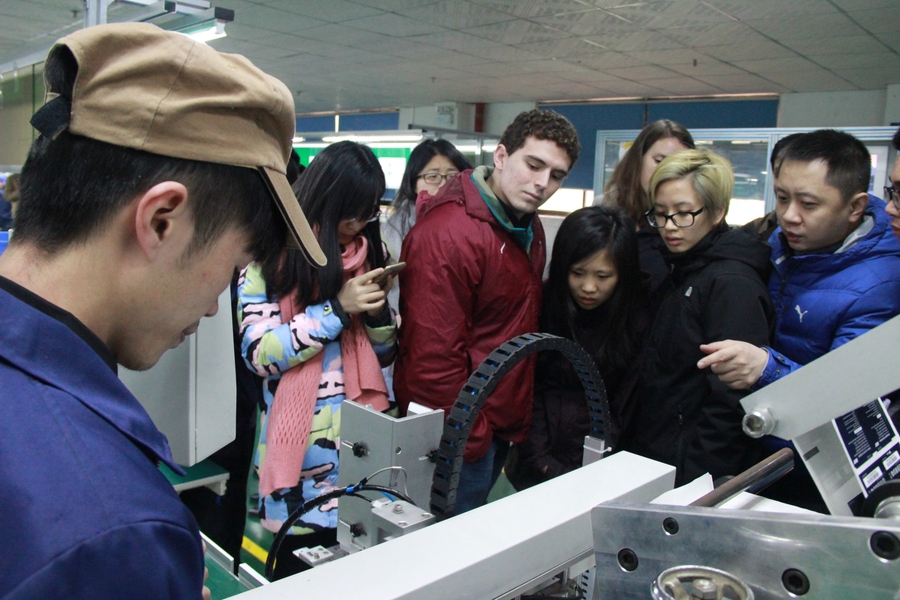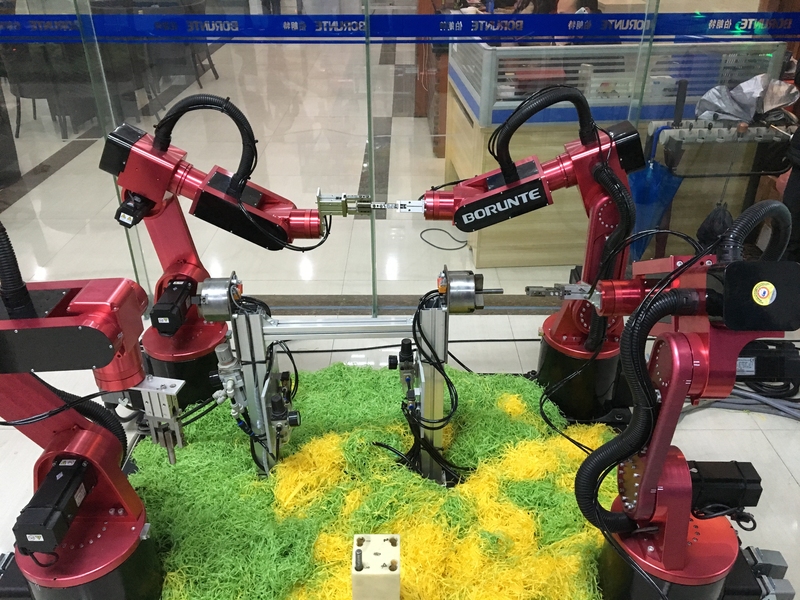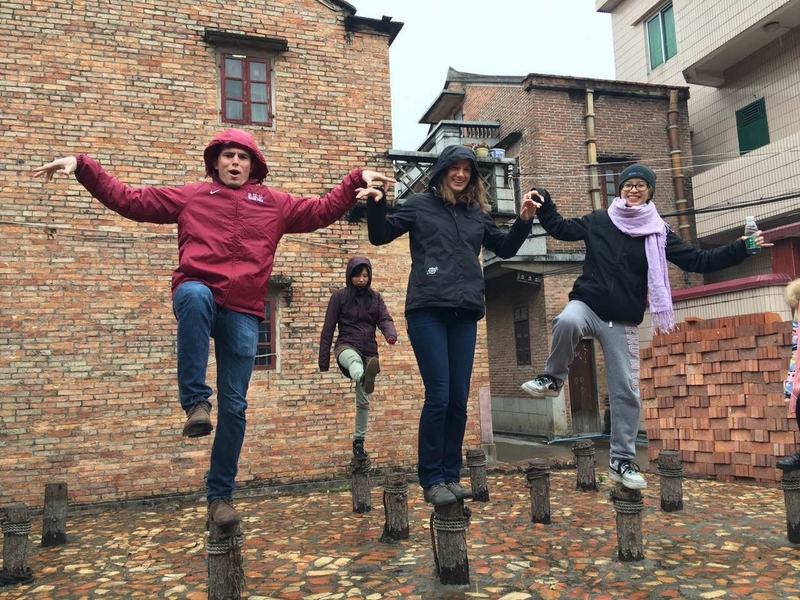In January, a group of MIT students traveled to the southern-most province in China for the first-ever Guangdong Manufacturing Innovation Ecosystems Tour during MIT's Independent Activities Period (IAP) as part of the MIT International Science and Technology Initiatives (MISTI) China Program.
Bordering Hong Kong and Macau, the Guangdong province is one of China’s key manufacturing hubs where thousands of factories line the streets. Students visited several of these factories to examine the development phases of Chinese intelligent manufacturing, identify production bottlenecks, and discuss the range of technical assistance MISTI-China’s internship program can provide through placing summer and longer-term interns in these companies.
The tour group comprised of juniors Zachary Churukian and Jorlyn Le Garrec, both mechanical engineering majors, and seniors Yang Dai, a computer science major, and Serena Pan, a mechanical engineering major. The students were joined by Yasheng Huang, associate dean for international programs and action learning at MIT Sloan School of Management, and faculty director of the MISTI-China Program. Churukian, who along with Le Garrec was among the first to sign up for the opportunity, took an immediate interest in the trip because “it gave me an opportunity to get a firsthand look at the manufacturing industry in Southern China.” He continues, “In addition, I’m interested in robotics, so I was excited to see how the companies there are transitioning to a more automated manufacturing process.”
On day one of the tour, the group went to Shini, a manufacturer of plastic auxiliary equipment specializing in the production of S-LINK, a way of connecting machinery in the plant to automate labor. The second stop was to a company called Borunte, a developer of industrial robots, where the students were treated to a demonstration of the robotic arms at work in the factory. During the tour, Le Garrec observed that the company is “extremely centered on loyalty to the brand and to each other. They have a company song that is sung every morning and hold value in providing for their employees.”
On day two, they toured Derneng, a manufacturer of smart packaging of lithium batteries. “The outing to Derneng was eye opening,” says Le Garrec. “While they have automated many of their assembly lines, they also have retained the same number of employees by increasing production.”
The tour group also visited the city of Shenzhen to explore the Qianhai special economic and technological development zone, a major commercial development aiming to be the center of innovation in China. “Not only did I get to learn about the Chinese manufacturing industry, but I also got exposed to the emerging entrepreneurial scene in Shenzhen when visiting Qianhai, something I did not know existed prior to this trip,” shares Churukian.
The Guangdong Manufacturing Innovation Ecosystems Tour was a prelude to the activities and programming taking shape for the MIT Hong Kong Innovation Node. Plans for the Innovation Node were announced in November 2015, and MIT is currently in the process of building out a Hong Kong-based team that will officially establish a physical space and offer formalized, regular programming.
Hosted by MISTI, the China IAP trip was coordinated in conjunction with Tao Lin, former co-publisher of MIT’s Technology Review and Sloan Management Review China, and Viola Wang, a master’s student in MIT’s Center for Real Estate. Earlier this year, Lin and his colleagues established T.I.M.E., an international entrepreneurship laboratory to improve the technical capacity of manufacturing businesses in Guangdong, stimulate manufacturing business entrepreneurship, and accelerate the innovation and upgrading of manufacturing. Through his connections in the Chinese manufacturing industry, Lin organized the tour of the factories and engaged the group on ways to strengthen opportunities and activities in China for MIT students through MISTI and the Innovation Node.











